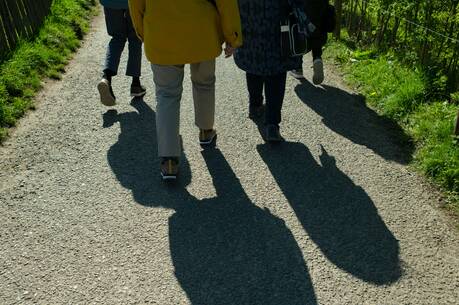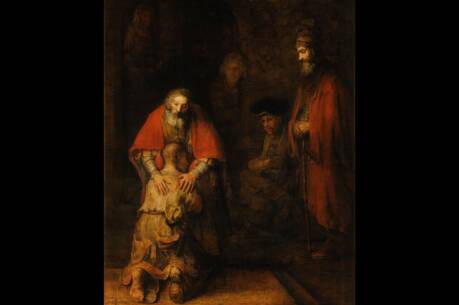Discerning the signs and places where God is present
Rarely do the first and second readings for Sunday match up thematically. The similarities in this Sunday’s readings emphasize the call to perceive new things and leave behind the old. The readings raise the question: What new symbols do we need today? Sometimes new ideas require fresh images, especially when one tries to discern the signs and places where God was present.
“For I put water in the wilderness and rivers in the wasteland for my chosen people to drink” (Is 43:20).
What are the images that communicate God’s presence today?
From what in the past do you need to let go to see new things today?
What new images might inspire our new times today?
The prodigious poet-prophet Isaiah opens this Sunday’s first reading with a bold statement. “See, I am doing something new! Now it springs forth, do you not perceive it?” (Is 43:19). Isaiah recognized the old exodus imagery and presented the Lord who acts in history as one who opens “a way in the sea” and “a path in the mighty waters.” The parting of waters of Exodus is perhaps the most iconic image in the biblical imagination. The prophet Isaiah dares to offer a new one for a community facing a new moment in history. As Israel moves from Babylon across the desert to Jerusalem (539 B.C.E.), this new “exodus” inspires a new image of rejuvenating waters: “I put water in the desert and rivers in the wasteland” (Is 43:20).
When Isaiah wrote, “remember not the events of the past,” he even meant the great Exodus from Egypt, centuries before. How can this be? The prophet attempted to teach the people how to discern their current situation and the difficult future of rebuilding their lives in Jerusalem. New problems and new times called for the new symbol of rejuvenating water. The symbols are realistic too, something that people could imagine. For example, when heavy rainfall arrives suddenly in dry desert riverbeds, known as wadis, they can cause intense flash floods that the living things of the desert drink in quickly. In only a short time, the desert transforms from a wasteland into a lush scene of flowering and flourishing. Nature shows that such transformations were possible and Isaiah used this as a symbol of God’s transformation of Israel.
In Paul’s letter to the Philippians, his personal theology embraces all things new because of having known Christ. “For his sake I have accepted the loss of all things and I consider them so much rubbish, that I may gain Christ and be found in him” (Phil 3:8). All things, both the good and the bad, are in the past, because Paul’s Christocentric worldview only has space for. Jesus is the one thing he needs to know for his own life, and Jesus is the only life of the Christian community. Paul’s new outlook on life requires only one thing: “Forgetting what lies behind but straining forward to what lies ahead…in Christ Jesus” (Phil 3:13-14).
This Sunday’s Gospel presents the woman caught in adultery, which could also be called the “Scene of the Unrighteous Busybodies.” (The entire scene is strange to the Gospel John. It is unknown in the earliest manuscripts of John’s Gospel, but it has always been accepted as canonical, regardless of its provenance.) When a crowd brought forth a woman caught in the act of licentious sin, they wanted Jesus to affirm their desire for a harsh punishment. “Moses commanded us to stone such women. So what do you say?” (Jn 8:5). The scene’s setting, near the Mount of Olives and in the temple area, is noteworthy. In this place where a guilty woman was freed from the sentence of death, the innocent Jesus would later be declared guilty and sentenced to the cross. The “passion” of Jesus and of the woman are dramatic opposites.
The woman caught in adultery goes away free and renewed. “Go,” said Jesus, “and from now on do not sin anymore” (Jn 8:11). As in the vision of Isaiah and the hope of Paul, Christ has made all things new for her. She has only a future to strain forward. “In the wilderness I make a way,” wrote Isaiah, “in the wasteland, rivers.”








